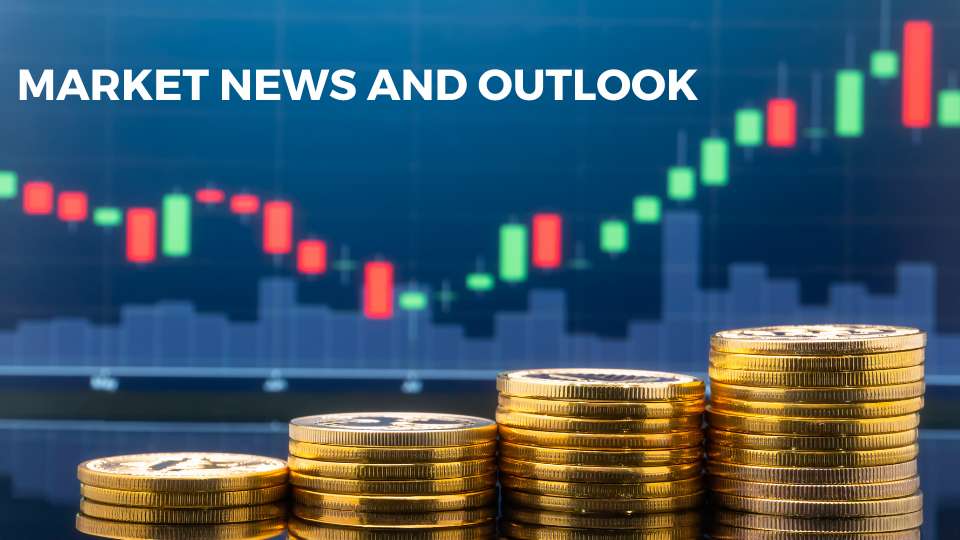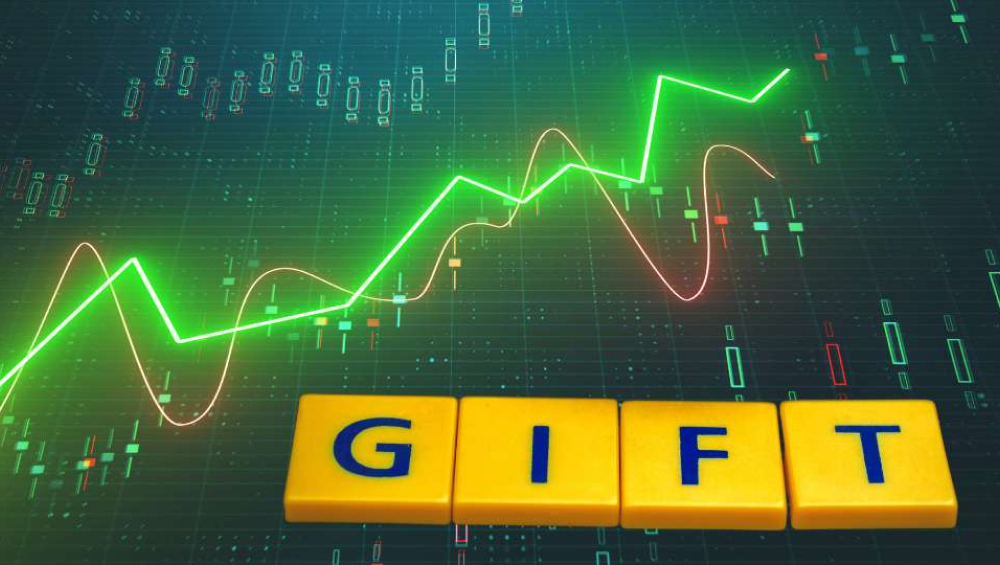The SGX Nifty, a key market indicator for Indian markets, has undergone some changes. As of 3 July, the rebranding from SGX Nifty to GIFT Nifty has become official. All derivative contracts worth $7.5 billion will be migrated from the Singapore Exchange (SGX) to the NSE International Exchange (NSE IX) in Gandhinagar, Gujarat.
This article will give you all you need to know about the shift from SGX Nifty to GIFT Nifty.

What is SGX Nifty?
The Singapore Exchange Nifty (SGX Nifty) is a futures and options contract based on the Nifty 50 index. It represents the top 50 companies listed on the National Stock Exchange of India (NSE).
Traders can trade SGX Nifty Futures and Options on the Singapore Stock Exchange (SGX), such as SGX Nifty 50 Futures. It provides investors with an opportunity to gain exposure to the Indian equity market without physically trading in India.
The SGX Nifty is useful in predicting market behaviour or fluctuations since Singapore’s time zone opens later than its Indian counterpart. This time difference allows for early decision-making. It helps to determine whether to implement a long or short position based on these price movements. Thus, it serves as a popular tool for global investors to track and trade Indian market sentiment.
What is GIFT Nifty?
GIFT Nifty is the result of the rebranding of SGX Nifty on July 3rd of this year. NSE International Exchange (NSE IX) has received the transfer of all open positions from SGX Nifty.
Instead of trading on the Singapore Exchange, Nifty futures contracts denominated in US dollars will now be traded on NSE IX. It has relocated to Gujarat International Finance Tec-City Special Economic Zone (GIFT City SEZ). It will be operating under the regulatory oversight of the International Financial Services Center Authority (IFSCA).
In addition to the Gift Nifty Fifty, other contracts are also available under the NSE IX. The contracts are Gift Nifty Bank, Gifty Nifty Financial Services and Gifty Nifty Derivatives contracts. According to Indiatoday, there are plans to introduce the other indices at a later stage.
Why the shift from SGX Nifty to GIFT Nifty?
Finshots’s article explained that the transformation from SGX Nifty to GIFT Nifty is the result of a series of events that unfolded over time.
Initially, the National Stock Exchange (NSE) of India introduced Nifty futures contracts in 2000. To make it more accessible to foreign investors, the NSE collaborated with SGX to create SGX Nifty. This allowed investors outside of India to trade Nifty futures in US dollars.
The popularity of SGX Nifty grew rapidly, with billions of dollars’ worth of contracts being traded in Singapore. This popularity drew the attention of the NSE, which felt that it was diverting funds away from the Indian market. As a result, the NSE decided to terminate its data supply agreement with SGX and ended the SGX Nifty.
However, India was developing the Gujarat International Finance Tec-City (GIFT City). This is a dedicated financial hub designed to attract foreign businesses.
Recognizing the potential of GIFT City, the NSE proposed a collaboration with SGX to establish trading in GIFT City and offer a linkage for foreign investors to trade the Nifty index in US dollars.
The agreement was reached, and on 3rd July this year, the contracts of SGX Nifty worth $7.5 billion migrated from Singapore to GIFT City.
The renamed GIFT Nifty would now be traded and handled by the NSE, with SGX playing a role in verifying and ensuring compliance. This shift means that investors no longer need to look to Singapore to gauge market sentiment, as GIFT City becomes the new reference point for Indian market opening cues.
This transition help bring trading activities back to India. This is in particularly to GIFT City, which offers a favourable regulatory framework and tax benefits. It aligns with India’s efforts to attract foreign investment and solidifies GIFT City’s position as a key financial centre.
Can International Traders Trade GIFT Nifty through SGX?
The short answer is yes, international traders can trade GIFT Nifty through SGX.
According to OutlookIndia, SGX IFSC India Connect has been set up to help facilitate trading and execution. It serves as a special-purpose vehicle company of SGX to direct all international trade orders to NSE IX. The trades executed will be cleared and settled through NSE IFSC Clearing Corporation (NICCL), while SGX-DC will serve as the central counterparty for SGX clearing members.
As per NSE IX, registered or non-registered traders, from India or abroad, can participate in GIFT Nifty trading by establishing their office through a subsidiary and obtaining NSE IX membership.
Traders can trade GIFT Nifty through Orient Futures Singapore. Orient Futures Singapore holds membership at the Singapore Exchange (SGX), which makes it more accessible for traders to trade under SGX.
Trading Hours for SGX Gift Nifty
According to Indiatoday, Gift Nifty trading hours will be open in two sessions and will be accessible for almost 21 hours.
One session is from 6:30 am to 3:40 pm, while the second session is from 4:35 pm to 2:45 am.
Compared to SGX Nifty, which traded for 16 hours from 6:30 am to 10:30 pm, the expanded timings of Gift Nifty offer greater overlap with trading hours in Asia, Europe, and the US.
How does the change to GIFT Nifty benefit traders?
According to Economic Times, traders operating through NSE IX and situated within a Special Economic Zone (SEZ), can take advantage of various tax exemptions. These exemptions include waivers on Securities Transaction Tax (STT), Commodity Transaction Tax, Dividend Distribution Tax, and Capital Gain Tax.
CEO of NSE IX, V. Balasubramaniam, also highlighted that non-resident players and Indian entities with subsidiaries in the designated area gain significant advantages, including tax exemptions.

Gift Nifty Market News and Outlook
According to Livemint, Gift Nifty started positively with Nifty futures trading higher at 19,507 on July 5, 2023.
The domestic market has been setting new closing highs for the fourth consecutive session.
Nifty closed at 19,389 on July 4, recording a gain of 66.45 points.
There is a profit-booking tendency at higher levels despite overall market optimism. Sectors like IT, commodities, and public sector banks have gained momentum.
Technically, the Nifty index and broader market show a bullish undertone. Overall, Gift Nifty has a positive outlook with favorable market sentiment and potential for further gains.
Start Trading With Orient Futures Singapore
Being an Overseas Intermediary of Shanghai International Energy Exchange (INE), Dalian Commodity Exchange (DCE), and Zhengzhou Commodity Exchange (ZCE), when foreign clients participate in internationalised futures contracts in these Chinese markets with us, they have direct access to trading, clearing, and settlement. Our parent company, Shanghai Orient Futures, is the largest broker in terms of aggregated volume across the five regulated exchanges in China.
Orient Futures Singapore also currently holds memberships at the Singapore Exchange (SGX), Asia Pacific Exchange (APEX), and ICE Futures Singapore (ICE SG).
We provide premium customer service at an affordable cost to all our clients. Our team will be there for you 24 hours on trading days to provide a one-stop portal for all your trades, with simple processes and an intuitive user interface that has low or near-to-zero latency.




